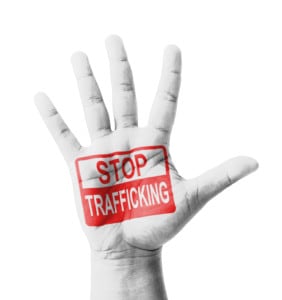The Naked Truth about Human Sex Trafficking
I will never forget the first patient I treated who was the victim of sexual trauma and kidnapping. A 16-year-old immigrant who spoke limited English, the stories that she painstakingly recounted as we started the therapeutic process of recovery were so horrific that I would often leave the session in disbelief that humans were capable of such cruelty. How could someone do this to another human being, let alone a child?
All of us lie to ourselves about the truth (1). We are particularly good at lying about issues that are most psychologically upsetting to admit—it helps us cope with some of the most brutal realities of life. Yet, it doesn’t make the truth any less true.
In that vein, most of us struggle to admit that human sex trafficking, sexual violence and torture occur on a daily basis. We can’t emotionally handle the idea that people—often young children—are induced into the commercial sex trade against their will for the financial profit of others (2).
We don’t want to know that 2 million children are victims of the sex trade each year (3); that the average girl being forced into prostitution in the USA is 13 years old (4); and that over 80% of confirmed cases of sex trafficking in the United States are American-born citizens (5). We can’t fathom that an estimated 20.9 million people are enslaved in the world today (6,7), many of whom are forced to engage in sex for the profit of someone else.
The truth is that human sex trafficking is the fastest growing criminal industry in the world, accounting for an estimated $150-billion a year (8).
January is National Slavery and Human Trafficking Prevention Month (9). In the interest of humanity, here are three simple things that we can do to help fight sex trafficking in our communities.
1. Education and awareness
We can’t fight sex trafficking until we can actually admit that it is happening. We have to be willing to acknowledge the data and listen to the many emotionally charged stories of survivors. We actually have to be affected by the reality. Watch A Path Appears, a new documentary airing on PBS exploring issues of gender inequality and sex trafficking (10), or one of many documentaries and short films exposing the lived experiences and world of sex trafficking (11).
2. Communicate
Often, the more taboo and ugly the topic, the less we want to talk about it. Yet, as we become more aware, we have to talk about it—honestly and openly. The more we can start a dialogue about the realities of sex trafficking, the more likely we are as a global community to do something about it.
3. Get Involved
As the truth is acknowledged, we have to do something. In addition to talking about it, become involved in prevention efforts in your community. There are many organizations dedicated to fighting sex trafficking, such as the Not For Sale Campaign (12), UNICEF End Sex Trafficking Project (13) and the Polaris Project (14). Whether you take a moment to sign a petition that supports governmental legislation to help end trafficking, attend an awareness event, or talk to your friends about this difficult topic, collective efforts can make a difference (15).
The Naked Truth is this: Human sex trafficking is an enormous problem in the United States and around the world. Choose to become more informed about the facts of human sex trafficking, talk about them, and get active. We cannot allow our self-deceptive tendencies to delude us into ignoring this issue.
*Note: If you or someone you know is the victim of a human sex trafficking, please call the National Human Trafficking Resource Center Hotline (1-888-373-7888) or the U.S. Department of Justice Hotline (1-888-428-7581).
Selected References:
1. Warren, C. S. (2014). Lies We Tell Ourselves: The Psychology of Self-Deception. Sevierville, TN: Insight Publishing.
2. https://www.nctsn.org/resources/public-awareness/human-trafficking
3. UNICEF, Children Out of Sight, Out of Mind, Out of Reach; Abused and Neglected, Millions of Children Have Become Virtually Invisible (Dec. 2005).
4. https://aspe.hhs.gov/hsp/07/humantrafficking/LitRev/
5. https://ojp.gov/newsroom/pressreleases/2011/BJS11093.htm
6. freetheslaves.net
7. International Labour Organization (2012), ILO global estimate of forced labour: Results and methodology.
8. https://www.ilo.org/global/about-the-ilo/newsroom/news/WCMS_243201/lang–en/index.htm
9. https://www.whitehouse.gov/the-press-office/2011/12/30/presidential-proclamation-national-slavery-and-human-trafficking-prevent
10. https://www.pbs.org/independentlens/path-appears/film.html
11. https://www.polarisproject.org/storage/documents/Human_trafficking_films_full_list_with_summaries.pdf.
12. https://notforsalecampaign.org/human-trafficking/
13. https://www.unicefusa.org/mission/protect/trafficking/end
14. https://www.polarisproject.org/human-trafficking/overview
15. https://hq.salsalabs.com/o/5417/p/dia/action3/common/public/
Copyright Cortney S. Warren, Ph.D.
TO READ MORE OF DR. CORTNEY'S WORK, SUBSCRIBE TO HER BLOG
Safe subscribe. You will have the opportunity to opt-out with every notice we send.


